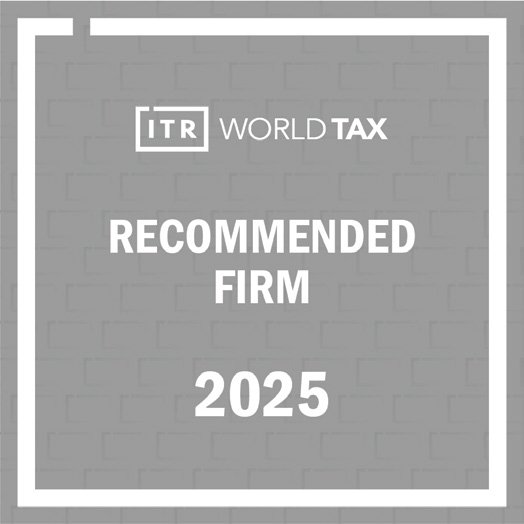PMK 172/2023 Rinci Ketentuan Analisis Industri Terkait PKKU
By: Choirunisa Nadilla Safitri
|

Ketentuan mengenai analisis industri terkait prinsip kewajaran dan kelaziman usaha (PKKU) diatur lebih rinci pada Peraturan Menteri Keuangan (PMK) Nomor 172 Tahun 2023 yang berlaku pada 29 Desember 2023.
Sebelumnya, beleid ini merupakan aturan baru yang mencabut regulasi-regulasi sebelumnya seperti PMK 213/PMK.03/2016, PMK 49/PMK.03/2019, dan PMK 22/PMK.03/2020. Dengan demikian ketiga aturan tersebut tidak berlaku lagi.
Baca Juga: Ketentuan Baru Dirilis, Penyampaian TP Doc Maksimal 1 Bulan Sejak Permintaan
Pada Pasal 6 PMK Nomor 172 Tahun 2023 tersebut diuraikan, bahwa analisis industri dilakukan untuk mengidentifikasi tujuh faktor yang memengaruhi kinerja usaha dalam industri tersebut.
Ketujuh faktor tersebut di antaranya adalah:
- Jenis produk berupa barang atau jasa
- Karakteristik industri dan pasar, seperti pertumbuhan pasar, segmentasi pasar, siklus pasar, teknologi, ukuran pasar, prospek pasar, rantai pasokan, dan rantai nilai
- Pesaing dan tingkat persaingan usaha;
- Tingkat efisiensi dan keunggulan lokasi Wajib Pajak;
- Keadaan ekonomi yang memengaruhi kinerja usaha dalam industri tersebut, seperti tingkat inflasi, pertumbuhan ekonomi, suku bunga, dan nilai tukar/kurs;
- Regulasi yang memengaruhi dan/atau menentukan keberhasilan dalam industri; dan
- Faktor-faktor selain faktor-faktor sebagaimana dimaksud dalam angka 1 sampai dengan angka 6 yang memengaruhi kinerja usaha dalam industri tersebut.
Faktor-faktor ini memang tidak diuraikan di aturan sebelumnya yang hanya mengungkapkan bahwa analisis industri merupakan bagian dari tahapan penerapan PKKU, tanpa menguraikan lebih detil objek analisis yang dilakukan.
Baca Juga: PMK 172/2023 Atur Ulang PPN Transaksi Afiliasi, DJP Berwenang Sesuaikan Harga Jual
Uraian ketentuan analisis industri PMK Nomor 172 Tahun 2023 tersebut tidak hanya lebih rinci dibandingkan PMK 213/PMK.03/2016 dan PMK 22/PMK.03/2020, tetapi juga dibandingkan aturan lainnya, yaitu Lampiran Peraturan Direktur Jenderal Pajak Nomor PER-22/PJ/2013 dan Lampiran Surat Edaran Direktur Jenderal Pajak Nomor SE-50/PJ/2013.
Dalam Lampiran PER-22/2023 hanya menjelaskan, bahwa salah satu tahapan mengidentifikasi karakteristik transaksi afiliasi Wajib Pajak adalah memperhatikan kondisi yang memengaruhi industri. Di antaranya terdiri dari karakter industri Wajib Pajak, identifikasi kompetitor, dan faktor-faktor ekonomis serta regulasi yang memengaruhi bisnis Wajib Pajak.
Sementara Lampiran SE-50/PJ/2013, hanya menjelaskan, bahwa analisis industri Wajib Pajak perlu memperhatikan karakteristik utama industri dan performa industri.
Manfaat dan Benchmark Global
Dalam konteks penyusunan TP Doc, analisis industri memainkan peran sentral dalam menilai keadaan ekonomi transaksi afiliasi. PMK Nomor 172 Tahun 2023 secara khusus menekankan pentingnya analisis industri sebagai faktor kesebandingan, sejalan dengan prinsip-prinsip PKKU.
Adapun ketentuan mengenai analisis industri dalam penyusunan TP Doc, termasuk PMK Nomor 172 Tahun 2023, telah mengacu pada OECD Transfer Pricing Guidelines 2022, sebagai best practice atau panduan dalam skala global.
Analisis industri secara implisit dijelaskan dalam penjelasan keadaan ekonomi (economic circumstances) pada paragraf 1.130 yang berbunyi:
“Arm’s length prices may vary across different markets even for transactions involving the same property or services; therefore, to achieve comparability requires that the markets in which the independent and associated enterprises operate do not have differences that have a material effect on price or that appropriate adjustments can be made. Economic circumstances that may be relevant to determining market comparability include the geographic location; the size of the markets; the extent of competition in the markets and the relative competitive positions of the buyers and sellers; the availability (risk thereof) of substitute goods and services; the levels of supply and demand in the market as a whole and in particular regions, if relevant; consumer purchasing power; the nature and extent of government regulation of the market; costs of production, including the costs of land, labour, and capital; transport costs; the level of the market (e.g. retail or wholesale); the date and time of transactions; and so forth.”
Berdasarkan paragraf di atas, dapat disimpulkan analisis industri merupakan salah satu indikator yang dapat digunakan untuk menentukan, apakah terdapat perbedaan keadaan ekonomi antara transaksi afiliasi dan independen yang memiliki efek material terhadap harga. Sehingga, Wajib Pajak dapat menentukan penyesuaian apa yang tepat dilakukan untuk keadaan ekonomi tersebut.
Dengan demikian, penerbitan PMK 172/2023 telah sejalan dengan OECD Transfer Pricing Guidelines 2022 dan telah berusaha memberikan kepastian kepada Wajib Pajak mengenai cakupan analisis industry.
Untuk pendalaman kebiajakan ini, silahkan menghubungi kami, MUC Consulting, melalui aplikasi whatsapp atau melalui ask_muc@mucglobal.com. Sebagai informasi, MUC Consulting merupakan perusahaan konsultan pajak yang berada di Jakarta dan Surabaya. (ASP)


